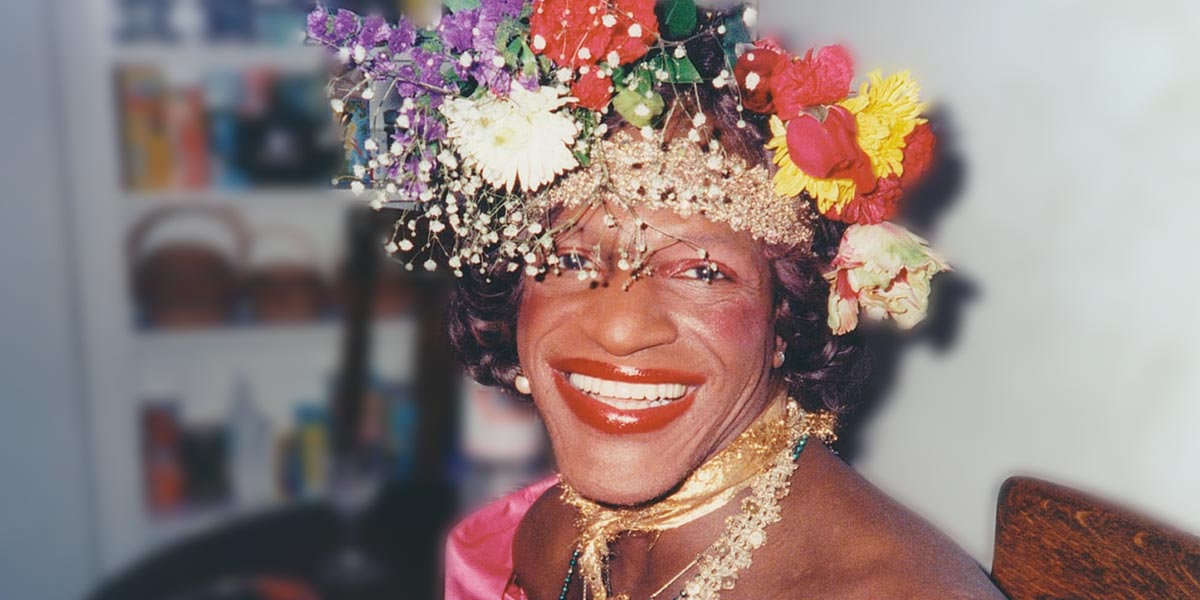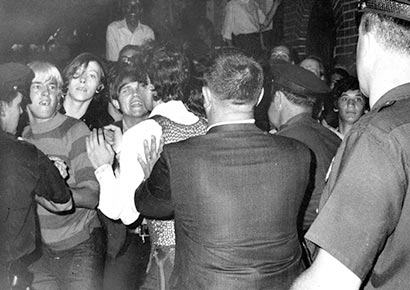Know your Pride | Some of the key figures of Stonewall

Marsha P. Johnson (Pic: Netflix)
The events that occurred in the early hours of 28 June 1969 at the Stonewall Inn in Greenwich Village, New York City, are often described as a turning point in the fight for LGBTQI+ equality.
After years of abusive police raids, the patrons of the gay bar fought back against officers, igniting days of scuffles and protests in the streets.
Certainly, nothing could ever be the same again after those fateful events and we owe the celebrations that modern Pride marches have become to those who stood up against oppression.
As we mark the 50th anniversary of Stonewall this month, here are some of the most prominent figures who were at the forefront of the historic uprising.
Marsha P. Johnson
Marsha P. (short for “pay it no mind”) Johnson was both a self-identified drag queen and transgender woman who is often credited with being one of three people who sparked the Stonewall riots.
Johnson herself later denied this claim, saying she arrived shortly after the protests had started. Still, Stonewall historian David Carter did conclude that Johnson was “extremely likely to have been among the first people at Stonewall to resist police”.
Post-Stonewall, Johnson remained an LGBTQ activist and participated in the Christopher Street Liberation Parade on the one-year anniversary of the Stonewall riots; this event would precede what we today know as Pride parades.
Johnson joined the Gay Liberation Front and co-founded the Street Transvestite Action Revolutionaries (STAR), a radical political collective that provided support and housing to homeless queer youth and sex workers in Lower Manhattan.
She would later join ACT UP and became a prominent AIDS activist until her death in 1992 when her body was discovered floating in the Hudson River. It was initially ruled a suicide, but activist Mariah Lopez succeeding in getting the NYPD to reopen the case as a possible homicide in 2012 (the case remains unsolved).
In the year of her death, Johnson famously said: “How many years does it take for people to see that we’re all brothers and sisters and human beings in the human race? I mean how many years does it take for people to see that we’re all in this rat race together.”
As a part of New York City’s 50th anniversary of the Stonewall uprising this year, the city’s mayor, Bill de Blasio, announced that Johnson and fellow activist and close friend Sylvia Rivera would be honoured with a monument – thought to be the first ever permanent, public monument to be erected in the honour of transgender women anywhere in the world.
Raymond Castro
A baker and cake designer by trade, Raymond Castro is noted to have been the first person arrested at Stonewall on 28 June. Just 28-years-old at the time, Castro ignited the crowd when he shoved back and knocked the police officers who had just handcuffed him off their feet.
Castro was a Puerto Rican immigrant who passed away at 68 from inoperable stomach cancer, which he lived with for two years longer than doctors expected.
Speaking about the Stonewall Riots long after the event, Castro said, “I had no idea that I was going to be involved in history-making … I would do it all over again.”
Danny Garvin
A native New Yorker, Danny Garvin was on the frontlines at Stonewall when he was a mere 20 years old. Historian David Carter described Garvin and another Stonewall protestor, Tommy Lanigan-Schmidt as the “two most knowledgeable sources” on the riots at Stonewall in 1969.
Garvin was one of the key witnesses interviewed for Stonewall Uprising, a documentary based on David Carter’s 2004 book, Stonewall: The Riots That Sparked the Gay Revolution.
When Garvin died of chronic obstructive pulmonary disease and liver cancer at 65 in 2016, the author lamented the loss of not only an important historical source but also of a dear friend.
“Danny’s gentle and sensitive nature brought a great deal of warmth and humanity to the history of this watershed event in the LGBT civil rights movement and also endeared him to his friends and family. Of all the persons I met working on the book, he was the sweetest. I will always miss him and consider myself blessed and honoured to have been his friend,” said Carter.

Pic: Wikipedia
Jerry Hoose
Christopher Street, where the Stonewall rebellion took place and the site of one of the first gay Pride marches a year later, was also where Stonewall veteran Jerry Hoose lived.
Hoose’s involvement with Stonewall threw him right into activism, and he would remain involved in gay politics for the rest of his life. Hoose was a founding member of the Gay Liberation Front, one of the first organisations to represent the radicalisation of queer people right after Stonewall.
Always looking out for the most marginalised in a particular group, Hoose concerned himself with the wellbeing of the elders of the local LGBT community in New York later in his life.
His lifelong base at the LGBT Centre on West 13th Street saw him focusing on Services and Advocacy for GLBT Elders (SAGE). Together with other elders of the gay liberation movement, Hoose fostered important intergenerational interaction between Stonewall vets and other elders, and the young and very different gay community that took the torch from them.
Hoose passed away in 2015, but his contribution to the fight for equality is one that still resonates today. Acting as a marshal at the first Pride march on Christopher Street a year after the events at Stonewall, Hoose was – as he would be his whole life – defiant, loud and proud. A friend and author, Perry Brass, recalls Hoose encouraging the crowd along the way.
“Keep your heads up! You’re not in a dark bar anymore, but in the sunshine,” Hoose is said to have shouted to the crowd through a megaphone. “We’re gay and we’re proud! Say it now: ‘Gay and proud! Gay and proud!’”
Leave a Reply